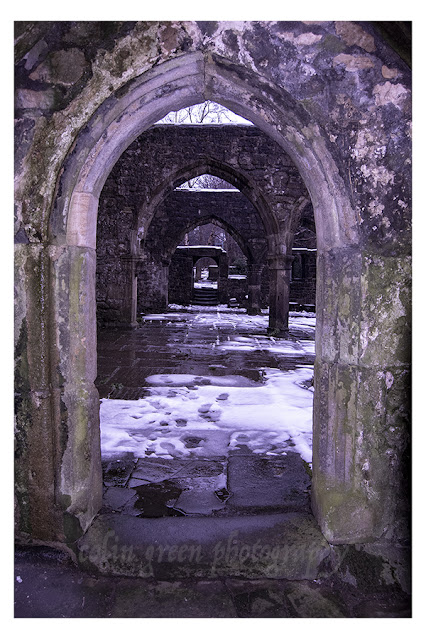Against a backdrop of snow-dusted hills and a brilliant blue sky, Christ Church in Sowerby Bridge stands as a magnificent sentinel. These images, captured on a crisp March day in 2018, show the church in a rare and beautiful state, its historic stone and Gothic features enhanced by a fresh layer of winter white.
A New Church for a Growing Town
Christ Church's story is one of community spirit and forward-thinking. Built in 1821 by architect John Oates, it was the culmination of over two decades of dedicated fundraising. The growing population of Sowerby Bridge had outstripped the capacity of the old Brigg Chapel, which had served the town since 1526, and a new, larger place of worship was needed.
Despite its completion in 1821, the church's official consecration was delayed until 1824, a small footnote in the grander tale of its creation. The photographs beautifully showcase the church's impressive architecture, from its towering steeple and clock face to the intricate detailing of its windows and buttresses.
A History of Adaptation and Resilience
Christ Church has not remained static since its construction. It has been remodelled, extended, and refurbished multiple times to meet the changing needs of its congregation. A particularly dramatic moment in its history occurred in 1895, when a fire ravaged the chancel, roof, and organ. The church was gutted but not defeated, and the community rallied once again to restore it to its former glory.
Inside, the church holds treasures from other nearby places of worship that have since closed. This practice of repurposing and relocating items speaks to the deep sense of history and continuity within the Anglican faith in this area, ensuring that pieces of the past are not lost but are given a new home and a new purpose.
The Story of the Graveyard
The churchyard has a history all its own. In 1857, the Secretary to Queen Victoria ordered its closure due to public health concerns and fears of disease. Despite this official order, burials are said to have continued for over a century, with the last known burial being John Eddie Bottomley in 1960. The images show the snow-covered landscape of the graveyard, a peaceful and sombre place that holds the final resting places of generations of Sowerby Bridge residents.
The view from above, overlooking the church and the snow-dusted landscape, is particularly striking. It frames Christ Church as a landmark, a prominent feature in the valley that has witnessed the town's evolution from a small settlement into a bustling community.
These photographs, taken with a Nikon d3300, capture not just a building, but a living piece of history. Christ Church, Sowerby Bridge, with its history of fundraising, fire, and resilience, stands as a testament to the enduring spirit of its community, its story etched in stone, and its beauty enhanced by the quiet blanket of a winter's day.
Clicking any of the images below should open a link in another window to my Colin Green Photography store on Zazzle.
The Rochdale Canal once flowed through the junction pictured, with its church tower overlooking Lock Number 3. However, this section was infilled sometime in the late 1940s or early 1950s, and Tuel Lane was built over it.
The canal was successfully reopened in 1996, but a new approach was needed. A tunnel was constructed underneath the junction, and Locks 3 and 4 were replaced by the deepest canal lock in the United Kingdom, built a short distance to the west of the original Lock 3.
The steps leading up to the church are a recent addition, constructed as part of a road-widening project. The church clock was installed in 1839.
This photo wouldn't have been possible just a few years ago. The view was completely blocked by York House, a block of maisonettes with a poor reputation. The building was torn down around the turn of the millennium, and the area where it once stood is now an overgrown, abandoned plot.
Please take a moment to share this post, follow me on social media, and explore my work on Clickasnap and Photo4Me using the links below. Your support means a lot!
All the pictures remain the copyright of Colin Green.





















































